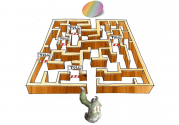Recently, Changdian Technology announced that it will increase its investment in Changdian Technology Automotive Electronics (Shanghai) Co., Ltd. (hereinafter referred to as the "Target Company") by 4.4 billion yuan, of which the original shareholder Changdian Management will increase its capital by 2.326 billion yuan, and the original shareholder Xinxin Fund will give up Capital increase; new shareholders Big Fund II, State-owned Assets Management Company, Shanghai Fund II and Core Whale increased their capital to the target company by 864 million yuan, 700 million yuan, 270 million yuan and 240 million yuan respectively.
It is understood that Changdian Technology Automotive Electronics (Shanghai) Co., Ltd. was established in April 2023. The legal representative is Zheng Li and the registered capital is 400 million yuan. After this capital increase, its registered capital will increase to 4.8 billion yuan.
This capital increase is mainly to accelerate the construction of an advanced packaging base for large-scale professional production of automotive-grade chip products in Shanghai Lingang New Area, supporting domestic and foreign major customers and major industry partners, and oriented to the highly electrified and intelligent new energy vehicles. ization and comprehensively build a complete local supply chain of finished chip products.
Public information shows that Changdian Technology’s automotive chip finished product manufacturing, packaging and testing production base located in Lingang, Shanghai covers an area of more than 200 acres, with a factory area of approximately 200,000 square meters. The project started construction in August this year. It is expected that after the project is completed in early 2025, it will not only become the first intelligent "black light factory" production line built by Changdian Technology in China, but also become a benchmark factory for large-scale professional automotive electronic chip manufacturing in China, driving the entire industry chain to a higher level. performance, high reliability, and high automation.

